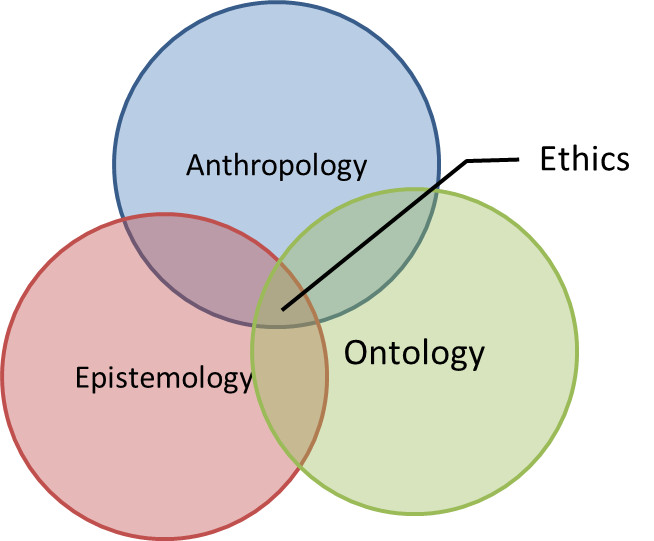The Faith Premises of Science
One of the curious traits of modern life is the fact that our ever-increasing advancements in technology, brought on by our application of reason, walk hand-in-hand with our ever-increasing disillusionment with faith. To understand why this situation should be considered curious, we must first look at what the mainstream attitude is to these trends.
Common knowledge asserts that there is nothing curious about this at all, that such a progression is as it should be, and that only the most unscientific of us continue to cling to faith. Those of our fellow beings who consider themselves intellectually sophisticated generally liken the poor souls ‘who still believe’ to our ‘modern’ conception of ‘primitive’ man – a being possessing a feeble mind that is inclined to believe that the world is administered by sylphs, dryads, titans, and gods.
A classic example of this dismissive thinking about how faith is antithetical to reason is the movie Contact. A strawman argument from beginning to end, this ‘measured’ exploration of why faith and reason are at odds is about as intellectually complex as a 30-second commercial for beer. A thin patina of meaty-sounding, semi-respectable platitudes are trotted out as a way of disguising the vapid content of the arguments. And to top it off, there isn’t even any good eye-candy in the movie.
So clearly, I think that faith and reason, rather than being at odds, are complementary aspects of human discovery. But how can I possibly hold such a position without being branded as a poor, intellectually bankrupt soul who clings to outmoded ideas through sheer desperation? By using the tools of reason to examine reason – that’s how.
There are two, closely-related ways of seeing this point-of-view. The simplest is also, paradoxically, the most controversial and emotionally charged. But since it is straightforward, it is the best place to start. In a nutshell, science is a fundamentally faith-based enterprise that is predicated on two articles that science itself cannot observe, measure, or classify. The first article of faith is that the world is understandable. This is the implicit assumption that went unsaid in the pseudo-intellectual’s critique of primitive man – that the world is not populated by magical creatures that affect changes on a whim. The second scientific article of faith is even more remarkable. It says that the experiment that one does in the here-and-now is applicable to the there-and-then. In a world largely driven by change, it is something of a philosophical leap to say that the change is changeless. True that the seasons progress but always in the same way. Summer follows spring; never the other way round. The sun rises and sets, but always in the same fashion and within changeless variations associated with season and latitude. Were this not true, science would lack all it predictive power.
If you aren’t happy with this simpler argument that then note that the scientific enterprise is based mostly on inductive logic. The experimenter conceives and performs an experiment. Data of a limited sort is gathered and subsequently analyzed. The results are generalized to abstract from this particular experiment to all similar situations or even (if one is of the caliber of Newton) to the universal. The generalization works from a preponderance of observations to make a probabilistic syllogism:
- Cause A is generated many times
- Each time effect A is observed
- This is all we know
- A then is probably generally true
It is true that once a general theory is put forward, predictions can be deductively obtained that then can be falsified with new experiments but the theory can never be proven with certainty that results from a deductive syllogism. Thus, science is ‘stuck’ depending on inductive logic.
As Harry Gensler points out in his book Introduction to Logic, inductive logic is always on a shaky footing. There are lots of problems. One big problem is just how the generalization is made; either too narrow or too broad a generalization makes the probabilistic syllogism fail (I guess we need Goldilocks generalizations). Occam’s razor is some help here but it is clearly not a scientific principle in that its justification can’t be based on empiricism – just what should be measured or observed to support the principle itself? Its utility is based on how well it seems to work when constructing scientific theories but it falls into a meta category (unless perhaps applied to artificial intelligence).
Another problem is that inductive logic can’t prove or argue for itself. Pretend for the moment it does. We might then be inclined to construct the probabilistic syllogism that reads
- We’ve used inductive logic many times
- It has produced the glory that is scientific progress
- That is all we know
- Inductive logic is generally true
Circular logic results since we need to assume inductive logic is true to show that inductive logic well supported. In and of itself, this situation is not any different than trying to use deductive logic to prove itself. At some level the tools of logic become self-referential and the argument falls apart. The standard appeal is to take certain principles as self-evident truths. For example, modus ponens works because it leads to sensible results. So we adopt it and use it. But this is a matter of faith – just because it has never failed doesn’t mean it won’t at some point.
So the only rational conclusion is that science, rather than running from faith, seems to have worked by running towards it. The only confusion that results is simply due to the fact that the faith it runs towards just that is doesn’t look like the ‘faith of our fathers’.



